Why you can trust Sunlight Media
- Expertise and Experience:Our content is crafted by seasoned professionals with extensive experience in digital marketing, ensuring you receive accurate and actionable advice.
- Unbiased Information:We provide impartial insights and recommendations based solely on what's best for your business, without any hidden agendas or promotions.
- Thorough Research:Our articles are backed by comprehensive research and the latest industry trends, ensuring you stay informed with reliable and up-to-date information.
- Transparency and Honesty:We believe in complete transparency. We disclose our sources, methodologies, and any potential conflicts of interest, so you can trust the integrity of our content.
- Continuous Improvement:We constantly review and update our content to reflect the latest developments in digital marketing, so you always have access to the most current and relevant information.

In today’s competitive digital landscape, simply driving traffic to your website isn’t enough—you need to turn those visitors into paying customers. This is where Conversion Rate Optimization (CRO) comes into play. CRO involves various conversion rate optimization strategies to enhance your marketing effectiveness, such as ensuring a fast and mobile-responsive website, improving user experience, and reducing bounce rates. By fine-tuning elements like landing pages, calls to action, and user experience, you can dramatically improve your site’s conversion rate, leading to increased sales and revenue without needing to drive more traffic.
In this blog post, we’ll walk you through the most effective CRO strategies, covering everything from user research to split testing, and explore how tools like Google Analytics can help boost your website’s performance. Whether you’re running an ecommerce website, a service-based business, or a blog, optimizing your conversion rate is essential for maximizing the value of your website visitors and achieving your digital marketing goals.
What is Conversion Rate Optimization (CRO) and Why is It Important?

Conversion Rate Optimization (CRO) is the process of improving your website or landing page to increase the percentage of visitors who complete a desired action, such as making a purchase, filling out a form, or signing up for a service. CRO focuses on understanding user behavior, optimizing page elements, and removing obstacles that prevent users from converting. A key metric in this process is the site’s conversion rate, which measures the effectiveness of your online business in achieving its goals.
Why Is CRO Important?
1. Maximizes ROI: By improving your conversion rate, you increase the return on investment (ROI) from your existing traffic. Instead of spending more on driving traffic, CRO helps you get more value from the visitors you already have.
2. Improves User Experience: CRO often involves refining user experience, ensuring that visitors can easily navigate your site and complete actions without frustration. A smooth user experience leads to more satisfied customers and higher conversion rates.
3. Increases Revenue: Even small changes, like improving a call-to-action or simplifying a web form, can result in significant revenue boosts. CRO helps businesses turn more visitors into paying customers, which directly impacts the bottom line.
4. Competitive Advantage: In a crowded digital market, optimizing your site for conversions can set you apart from competitors. A higher conversion rate means more efficient use of your traffic, giving you an edge in acquiring customers.
CRO is a vital part of digital marketing because it enables businesses to continuously improve, increase conversions, and grow without necessarily having to increase traffic volume.
Average Conversion Rate: What to Expect for Your Industry

When evaluating your website’s performance, understanding the average conversion rate for your industry can help set realistic benchmarks. Conversion rates vary significantly depending on the type of business, target audience, and the specific actions you want users to take. Here’s a look at some typical conversion rates by industry to give you an idea of what to expect:
Average Conversion Rates by Industry:
1. Ecommerce Websites:
The average conversion rate for ecommerce sites hovers around 2% to 3%, although top-performing sites can achieve rates of 5% or higher. The wide range is due to factors like product type, price point, and user experience.
2. Lead Generation (B2B):
For B2B websites focused on generating leads, the average conversion rate is usually between 2% and 5%, depending on how niche the market is and the complexity of the sales process.
3. Financial Services:
Websites for financial services like loans or insurance often see conversion rates between 5% and 10%, as the high intent of users researching these services contributes to higher conversion rates.
4. SaaS (Software as a Service):
SaaS companies generally see conversion rates of 3% to 7%, with freemium models or free trials contributing to higher engagement and conversions.
5. Healthcare:
Healthcare websites, such as those offering appointments or medical consultations, can have average conversion rates of 2% to 4%, often depending on local competition and trust factors.
Key Factors Affecting Conversion Rates:
– Target Audience: Different demographics will interact with your site in unique ways. Knowing your audience’s pain points and motivations can directly impact conversions.
– Mobile Optimization: With more people browsing on mobile devices, ensuring your site is mobile-friendly is crucial for maintaining a healthy conversion rate.
– User Experience: A well-optimized landing page with clear CTAs, fast load speeds, and easy navigation can significantly boost conversions.
While these benchmarks can help you assess where you stand, it’s important to continuously test and optimize your site to push beyond the average and achieve better results.
Understanding Website Visitors and Conversion Rates

To effectively improve your website’s conversion rate, it’s crucial to first understand the behavior of your website visitors. Visitors come to your site from various sources—organic traffic, search engine results, social media, or paid advertisements—and each group may have different intentions. Some may be looking for information, while others are closer to making a purchase decision. Understanding these different types of visitors helps tailor your conversion rate optimization (CRO) strategies.
A site’s conversion rate is calculated by dividing the number of visitors who complete a desired action (such as making a purchase or filling out a web form) by the total number of visitors. This metric allows you to measure how effectively your website is turning traffic into leads or customers.
Key points to consider:
- Website visitors’ behavior can vary significantly based on the device they use, such as mobile devices or desktops. Optimizing for mobile users is essential as mobile traffic continues to grow.
- Analyzing user behavior through tools like Google Analytics can reveal key insights, such as which pages are performing well and where drop-offs happen in your conversion funnel.
- Understanding your visitors’ pain points—what prevents them from converting—helps you address and remove obstacles, boosting your site’s conversion rate.
By deeply understanding your audience and how they interact with your site, you can better optimize their experience and, ultimately, increase your conversion rates.
Identifying Your Target Audience
Identifying your target audience is a crucial step in conversion rate optimization (CRO). Understanding who your website visitors are, what they want, and what motivates them to take action is essential to creating an effective CRO strategy. To identify your target audience, start by analyzing your website traffic using tools like Google Analytics. This tool provides valuable insights into the demographics, interests, and behaviors of your visitors, helping you understand who is coming to your site and why.
Social media insights are another valuable resource. Platforms like Facebook, Twitter, and LinkedIn offer analytics that can help you understand your followers’ demographics and engagement patterns. This data can reveal what type of content resonates with your audience and what drives them to interact with your brand.
Customer surveys are also an effective way to gather direct feedback from your audience. By asking your customers about their needs, preferences, and pain points, you can gain a deeper understanding of what they are looking for and how you can better serve them.
By combining these data sources, you can create a comprehensive profile of your target audience. This understanding allows you to tailor your website content, design, and user experience to meet their needs, ultimately increasing conversions and improving your website’s performance.
Creating Buyer Personas for Effective CRO
Creating buyer personas is a powerful way to understand your target audience and create an effective CRO strategy. A buyer persona is a semi-fictional representation of your ideal customer, including their demographics, goals, challenges, and behaviors. By creating detailed buyer personas, you can gain a deeper understanding of your website visitors and create content, design, and user experiences that resonate with them.
To create buyer personas, start by gathering data from various sources. Use tools like Google Analytics to analyze your website traffic and identify common characteristics among your visitors. Conduct customer interviews and surveys to gather qualitative insights into their needs, preferences, and pain points. Social media insights can also provide valuable information about your audience’s interests and behaviors.
Once you have collected this data, create detailed profiles for each persona. Include information such as age, gender, occupation, goals, challenges, and preferred communication channels. Give each persona a name and a backstory to make them more relatable.
By using these personas to guide your CRO efforts, you can create more targeted and effective strategies. For example, if one of your personas values quick and easy access to information, you might focus on improving your website’s navigation and load speed. If another persona is motivated by social proof, you might highlight customer testimonials and reviews more prominently.
Creating buyer personas helps ensure that your CRO strategies are aligned with the needs and preferences of your target audience, leading to higher engagement and increased conversions.
How to Identify and Fix Pain Points in Your Conversion Funnel

Identifying and fixing pain points in your conversion funnel is essential to improve your conversion rates. A conversion funnel is the journey a user takes from landing on your website to completing a desired action, such as making a purchase or signing up for a newsletter. At each stage of the funnel, there may be obstacles that prevent users from converting, and addressing these pain points can significantly boost conversions.
Here’s how to identify and fix common pain points:
Analyze User Behavior: Use tools like Google Analytics and heat maps to observe how visitors navigate your site. Look for areas where users drop off or spend less time. This can help pinpoint issues with your landing pages, product pages, or checkout process.
Gather User Feedback: Direct feedback from users, whether through surveys, customer support interactions, or on-page tools like feedback forms, can highlight issues that are preventing conversions. Understand what users find confusing or frustrating.
Test Page Elements: Conduct split tests (A/B testing) on different elements of your pages, such as calls to action (CTAs), headlines, or button placement. This helps you determine which variations are more effective at moving users through the funnel.
Improve Page Load Speed: A slow website can frustrate users and cause them to abandon your site. Ensuring fast load speed is critical, especially on mobile devices, where users expect a seamless experience.
Simplify the Web Form: If you’re asking visitors to fill out a form, make sure it’s as simple as possible. Reducing unnecessary fields can increase the number of leads generated. Test different versions of your web form to see which performs best.
Address Trust Issues: Use customer testimonials, reviews, and other forms of social proof to build trust. Potential customers are more likely to convert if they see that others have had positive experiences.
By identifying these pain points and making targeted improvements, you can create a smoother, more enjoyable experience for visitors, leading to higher conversion rates.
Setting Up a CRO Strategy
Setting up a CRO strategy involves several key steps, including establishing clear goals and benchmarks, performing a CRO audit, and choosing the right CRO tools. By following these steps, you can create a structured approach to optimizing your website and increasing conversions.
Establishing Clear Goals and Benchmarks
Establishing clear goals and benchmarks is essential to creating an effective CRO strategy. Your goals should be specific, measurable, achievable, relevant, and time-bound (SMART). For example, your goal might be to increase conversions by 20% within the next six months. To establish benchmarks, you can use industry averages or your website’s current conversion rate as a baseline.
By setting clear goals, you can measure the success of your CRO efforts and make data-driven decisions. Regularly reviewing your progress against these benchmarks allows you to adjust your strategies as needed to stay on track and achieve your objectives.
Performing a CRO Audit
Performing a CRO audit involves analyzing your website’s current conversion rate optimization efforts and identifying areas for improvement. A comprehensive CRO audit should include an analysis of your website’s design, content, user experience, and technical performance.
Use tools like Google Analytics, SEMrush, or Ahrefs to analyze your website’s traffic, engagement, and conversion rates. Look for patterns and trends that indicate where visitors are dropping off or encountering obstacles. Identify underperforming pages, slow load times, and confusing navigation elements that may be hindering conversions.
By performing a CRO audit, you can create a roadmap for your optimization efforts, focusing on the areas that will have the most significant impact on your conversion rates.
Choosing the Right CRO Tools

Choosing the right CRO tools is essential to creating an effective CRO strategy. There are many tools available, each designed to address different aspects of conversion optimization. For example, A/B testing tools like Optimizely allow you to test different versions of your web pages to see which performs better. Heat mapping tools like Crazy Egg provide visual insights into how visitors interact with your site, highlighting areas that need improvement. Analytics tools like Google Analytics offer comprehensive data on your website’s performance, helping you track progress and identify opportunities for optimization.
When choosing CRO tools, consider your website’s specific needs and goals. For example, if you want to improve your website’s user experience, you might choose a heat mapping tool. If you’re focused on testing different page elements, an A/B testing tool would be more appropriate. By selecting the right tools, you can gain valuable insights into your website’s performance and make data-driven decisions to improve your conversion rates.
By following these steps and using the right tools, you can create a robust CRO strategy that drives higher conversions and improves your website’s overall performance.
Key Steps in the Conversion Rate Optimization Process
The conversion rate optimization (CRO) process is systematic and data-driven, designed to improve the percentage of website visitors who take a desired action. By following these key steps and implementing effective conversion rate optimization strategies, you can optimize your website and increase conversions.
- Conduct User Research
Start by understanding your audience. Use tools like Google Analytics to gather data on user behavior, such as how visitors navigate your site, which pages they spend the most time on, and where they drop off in the conversion funnel. Conduct surveys or interviews to gather direct user feedback on pain points or obstacles they face.
- Set Clear Goals and Metrics
Define what success looks like for your CRO efforts. Whether it’s improving the website’s conversion rate, increasing sales, or generating more leads, having measurable goals is key. Identify key metrics like average conversion rate, bounce rate, and user engagement to track improvements over time.
- Analyze Existing Data
Use historical data, heat maps, and site analytics to identify areas of your website that need improvement. Pinpoint underperforming pages, web forms, or product pages where visitors may be dropping off. Understanding this data helps prioritize areas to optimize.
- Develop Hypotheses for Optimization
Based on the data and user research, develop hypotheses for improving your site’s conversion rate. For example, you might hypothesize that a more prominent call to action will lead to more conversions, or that a simplified checkout process will reduce cart abandonment on an ecommerce website.
- Implement Changes and Conduct CRO Tests
Make data-driven changes to your site and test them through split testing (A/B testing). Test one variable at a time, such as the color of a button or the placement of a form, to understand what drives more conversions. Continuously run CRO tests to refine your site further.
- Monitor and Measure Results
After running tests, analyze the results to determine which changes had a positive impact on your conversion rates. Use custom reports and tools like Google Analytics to track progress and identify further areas of improvement.
- Optimize for Mobile Devices
With the growing use of mobile devices, it’s critical to ensure that your site is fully optimized for mobile visitors. Improve page elements, simplify forms, and ensure fast site speed to enhance the user experience on mobile.
By following these steps, you can create a robust CRO strategy that is continually evolving based on data, testing, and user feedback. This will help you refine your website to encourage more visitors to complete the desired actions, leading to higher conversion rates.
Boosting Conversion Rates with Clear Calls to Action (CTAs)
One of the most effective ways to improve your conversion rate optimization (CRO) is by crafting compelling and clear calls to action (CTAs). A strong CTA directs your website visitors toward taking the desired action, whether that’s making a purchase, subscribing to a newsletter, or filling out a web form.
Here are some ways to ensure your CTAs are optimized for conversion rates:
Make Your CTAs Stand Out: Use contrasting colors and bold text to ensure your CTA buttons are visually prominent on the web page. This can help increase user engagement and encourage potential customers to act.
Use Clear, Actionable Language: Phrases like “Buy Now,” “Get Started,” or “Download Free Tool” work better than vague language. Ensure the CTA clearly communicates what the user will gain.
Test Multiple Variations: Run split tests to see which CTA phrasing, placement, and color schemes drive the most conversions. Testing can help you pinpoint which elements resonate best with your target audience.
Place CTAs Strategically: Position your CTAs where they are most likely to convert visitors, such as at the end of a sales process, on product pages, or next to customer testimonials. Make sure they align with the flow of the conversion funnel.
Improving your CTAs can lead to more conversions, boosting your overall website’s conversion rate and turning your traffic into paying customers.
Using Heat Maps to Analyze User Interactions on Web Pages
Heat maps are an essential tool for improving conversion rate optimization (CRO) by providing a visual representation of how website visitors interact with different elements of your web pages. By analyzing user interactions, you can identify areas that may need adjustment to boost your conversion rates.
Here’s how to use heat maps effectively:
– Identify High-Engagement Areas: Heat maps highlight areas where users spend the most time or click frequently. These hotspots can guide you on where to place key elements like calls to action or value propositions to increase user engagement.
– Detect Pain Points: If you notice that visitors are ignoring important sections, such as product pages or forms, it may indicate a need for improvement. This data can help fix issues in the conversion funnel, optimizing the user experience and driving more conversions.
– Improve Page Layout: Use heat maps to assess the performance of page elements, like buttons, images, and text. If certain sections are underperforming, try adjusting the design or content based on the data gathered from the heat maps.
– Test Different Variations: Combine heat maps with split testing to evaluate different versions of your web pages. This allows you to gather actionable data and adjust CRO strategies for maximum impact.
Incorporating heat maps into your CRO efforts will help you make data-driven decisions, leading to better user experiences and increased conversion rates on your website.
How to Boost Conversions with Landing Page Optimization

Landing page optimization is a critical component of improving your conversion rate optimization (CRO) strategy. An effective landing page is designed to capture your website visitors’ attention and drive them to take the desired action—whether it’s signing up, downloading, or making a purchase. By focusing on key elements, you can significantly increase your conversion rates and achieve more success with your campaigns.
Here’s how to optimize your landing pages to boost conversions:
Create a Clear Value Proposition: Ensure that your landing page clearly communicates the benefit of your product or service. Visitors should understand immediately why they should engage with your page, and this clarity can improve user engagement and drive more conversions.
– Optimize for Mobile Devices: With an increasing number of users accessing websites from their phones, optimizing your landing pages for mobile devices is crucial. A smooth mobile experience can increase your website’s conversion rate.
– Include Social Proof: Adding customer testimonials or case studies can build trust and encourage potential customers to convert. Social proof helps reassure visitors that others have had a positive experience with your offering.
– Simplify the User Experience: Streamline your web form and minimize distractions on your landing pages. The fewer fields and distractions, the higher the likelihood visitors will convert. You can also use CRO tools like heat maps to track where users are clicking and fine-tune your design accordingly.
– Test and Measure Performance: Use split testing to evaluate different versions of your landing page. Test elements like headlines, CTAs, images, and layouts to identify what resonates best with your target audience and leads to higher conversion rates.
By applying these techniques, you can create optimized landing pages that drive more conversions and improve your overall website’s conversion rate.
Optimizing Product Pages to Increase Conversion Rates
Product page optimization is essential for improving the conversion rate on your ecommerce site or ecommerce website. Well-optimized product pages help turn visitors into paying customers by providing them with the information and confidence they need to make a purchase. Here are key strategies to optimize your product pages for higher conversion rates:
Clear and Engaging Product Descriptions: Ensure your product descriptions are clear, concise, and highlight the product’s key features and benefits. A compelling value proposition helps your target audience understand why they need the product, driving higher user engagement.
High-Quality Images and Videos: Product images and videos give customers a better understanding of what they are buying. High-quality visuals can boost trust and lead to more conversions. Additionally, using multiple images from different angles can enhance the user’s confidence in the purchase decision.
Fast Page Load Speed: A slow-loading product page can negatively impact your website’s conversion rate. Ensure that your site is optimized for fast load speed, especially on mobile devices, to keep users engaged.
Use Social Proof: Display customer testimonials, reviews, and ratings prominently on your product pages. Social proof helps build trust with potential buyers and can be a deciding factor in whether they convert or not.
Clear Calls to Action (CTAs): Make sure your CTAs, such as “Add to Cart” or “Buy Now,” are prominent and compelling. Position them strategically on the page so they’re easy for users to find and click, contributing to higher conversion rates.
Test and Refine Page Elements: Regularly conduct CRO tests, such as split testing, to identify the most effective layout, CTA text, or image placement. Continuous testing helps you fine-tune the page and maximize CRO efforts.
Optimizing your product pages using these strategies will not only enhance the user experience but also lead to higher conversion rates, ultimately driving more sales and increasing the overall performance of your ecommerce site.
CRO Strategies to Increase Your Website’s Conversion Rate
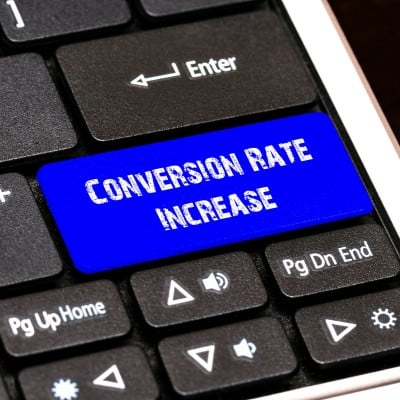
Implementing effective conversion rate optimization strategies is essential for increasing your website’s conversion rate and turning more visitors into customers. Here are several proven strategies to help boost conversions on your website:
Conduct User Research and Gather Data: Begin by conducting thorough user research to understand your audience’s behavior, preferences, and pain points. Use tools like Google Analytics, heat maps, and custom reports to gather insights. This data will guide your optimization efforts and help you focus on areas that need improvement.
Optimize for Mobile Devices: With a growing number of users accessing websites via mobile devices, optimizing for mobile is no longer optional. Ensure that your website’s design is responsive, with fast site speed and easy navigation, to improve the user experience and increase conversions on mobile.
Streamline the Conversion Funnel: Simplify the steps visitors need to take to complete the desired action. This could mean reducing the number of form fields, minimizing distractions on key pages, or improving the clarity of calls to action. The smoother and faster the process, the more likely visitors are to convert.
Leverage Social Proof: Use social proof elements such as customer testimonials, product reviews, or case studies to build trust with your potential customers. Showing that others have had positive experiences encourages new visitors to follow suit, helping to increase your conversion rates.
Run Split Testing (A/B Testing): Regularly test different elements on your website—such as headlines, CTAs, images, and layouts—using split tests. Testing variations helps you identify what resonates best with your audience, leading to more paying customers and a higher website conversion rate.
Improve Site Structure and Navigation: A well-organized URL structure and intuitive navigation make it easier for visitors to find what they’re looking for. A seamless user journey improves engagement and increases the likelihood of conversions.
Enhance Your Value Proposition: Clearly communicate your value proposition on key pages such as landing and product pages. When visitors quickly understand what sets your product or service apart, they’re more likely to take action.
By implementing these conversion rate optimization strategies, you can enhance your website’s performance, improve the user experience, and ultimately increase your conversion rates.
The Importance of Fast Load Speed for Conversion Optimization
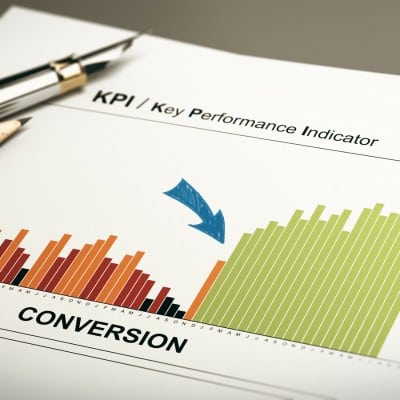
Fast load speed plays a critical role in conversion rate optimization (CRO), as it directly impacts the user experience and determines how long visitors stay on your website. A slow website can frustrate users, leading to higher bounce rates and missed opportunities for conversions. Here’s why fast site speed is essential for boosting your website’s conversion rate:
Improved User Experience: Visitors expect websites to load quickly, especially on mobile devices. If your web pages take too long to load, users may leave before they even see your content, decreasing your chances of converting them into customers.
Higher Search Engine Visibility: Search engines like Google prioritize websites with faster loading times. A faster website can help improve your website’s visibility on search engine results pages, driving more organic traffic and potential conversions.
Reduced Bounce Rates: A fast-loading site reduces the likelihood of visitors abandoning your page due to slow performance. By improving your site speed, you can keep users engaged longer, increasing the chances that they will complete the desired action, whether it’s filling out a web form or making a purchase.
Increased Mobile Conversions: With more users browsing on their smartphones, optimizing your site for mobile devices is crucial. Faster loading times on mobile can significantly improve your mobile optimization efforts and lead to higher conversion rates.
– Better Performance in Split Testing: When running CRO tests like split testing, page speed can influence results. A fast-loading version of your page will likely perform better than a slower one, even if the content remains the same. Ensuring optimal performance helps you get more accurate test results.
In conclusion, optimizing for fast load speed is a fundamental part of any successful CRO strategy. Faster pages lead to higher user satisfaction, improved engagement, and ultimately, more conversions.
Improving Site Structure and URL for Better CRO Results
Optimizing your site structure and URL plays a vital role in achieving better conversion rate optimization (CRO) results. A well-organized website and clear, readable URLs not only enhance the user experience but also improve search engine rankings, driving more relevant traffic and helping you convert more visitors into customers. Here’s how to improve these aspects for better CRO:
Create a Logical Site Structure: Organize your website’s content in a clear and logical manner. This makes it easier for both users and search engines to navigate through your site. A well-structured website enhances user engagement, leading to more time spent on your site and a higher likelihood of conversions happening.
Atmos Funded, understand the power of a well-organized site structure. When they streamlined their own website layout, focusing on clear navigation and logical content flow, they saw a measurable improvement in user engagement and conversions. Visitors were able to find key information more efficiently, which led to a noticeable increase in completed actions. A cohesive site structure is not only crucial for a seamless user experience but also directly impacts conversion success.
This insight reinforces the article’s message by highlighting how Atmos Funded’s internal experience proves that a clear, logical website structure enhances both user experience and conversion rates.
Use Descriptive and Clean URLs: Your URL structure should be easy to read and understand, both for users and search engines. Descriptive URLs that clearly indicate the content of the page can improve click-through rates from search engine results pages, driving more organic traffic to your website. For example, “yourwebsite.com/product-category/shoes” is better than “yourwebsite.com/p123.”
Enhance User Experience: A clear site structure helps users find what they are looking for quickly. When visitors can easily navigate your conversion funnel, they’re more likely to take the desired action. This also reduces frustration, improving your conversion rates.
Boost SEO Performance: A well-optimized site structure and URLs improve your website’s visibility on search engine results pages. Search engines use these elements to understand the hierarchy and relevance of your content, which can lead to better rankings and more potential customers visiting your site.
Optimize for Mobile Devices: Ensuring your site structure and URLs work well on mobile devices is critical for capturing mobile traffic. A mobile-optimized structure makes it easier for users to navigate on smaller screens, which can significantly boost your mobile optimization efforts and increase conversions.
By improving your site structure and optimizing your URL structure, you can enhance both the user experience and search engine performance, leading to higher conversion rates and better overall results in your CRO strategies.
The Role of User Research and Feedback in Improving Conversion Rates

User research and feedback are foundational elements in improving conversion rates as they provide valuable insights into the behavior, needs, and pain points of your audience. By understanding how visitors interact with your website, you can make data-driven decisions to optimize the user experience and increase conversions. Here’s how user research and feedback contribute to a more effective conversion rate optimization (CRO) strategy:
Identify Pain Points in the Conversion Funnel: Through user research, such as surveys, interviews, or analyzing historical data, you can discover what obstacles prevent users from completing the desired action. Whether it’s a confusing web form or a lengthy checkout process, identifying these pain points helps you address specific issues that could be hurting your conversion rates.
Understand User Behavior: Tools like heat maps, Google Analytics, and CRO tools allow you to track user interactions on your website. This data shows where visitors are clicking, which pages they’re spending the most time on, and where they drop off in the conversion funnel. By understanding these behaviors, you can better tailor your content and design to meet their needs and guide them toward converting.
Gather Direct User Feedback: Feedback from your existing customers or potential visitors provides firsthand insight into what works and what doesn’t on your site. This can include feedback on your value proposition, the ease of navigation, or the clarity of calls to action. By actively gathering and responding to feedback, you can make targeted changes that resonate with your audience and improve your website’s conversion rate.
Test and Validate Changes: After gathering research and feedback, you can implement changes to improve user engagement and run split tests to see if these changes lead to more conversions. Testing different page layouts, wording, or CTA placements based on feedback ensures your decisions are data-backed and effective in improving conversion rates.
In conclusion, user research and feedback are key to refining your CRO strategies. By understanding user behavior, gathering actionable insights, and continuously testing improvements, you can increase your website’s performance and achieve higher conversion rates.
Maximizing Organic Traffic with Search Engine Optimization (SEO) for CRO
Maximizing organic traffic through search engine optimization (SEO) is crucial for improving your conversion rate optimization (CRO) efforts. Bringing more qualified visitors to your website gives you more opportunities to convert them into leads or paying customers. Here’s how SEO can help you optimize for conversions:
Optimize for Targeted Keywords: Conduct keyword research to identify terms your target audience is searching for, such as those related to your products or services. Use these keywords strategically in your content, meta tags, and URL structure to attract relevant traffic. The more aligned your keywords are with the intent of your visitors, the higher the chance they will take the desired action once they land on your page.
Improve Search Engine Results Page (SERP) Visibility: Ranking higher on search engine results pages (SERPs) can increase your website’s visibility and drive more organic traffic. Implementing SEO best practices, such as using descriptive URLs, optimizing title tags, and improving site structure, makes it easier for search engines to understand and index your content, leading to higher rankings.
Enhance Site Speed and Mobile Optimization: Google rewards fast-loading and mobile-friendly websites, and these factors also play a direct role in conversions. A fast-loading, mobile-optimized website ensures a seamless user experience, especially for mobile devices, leading to higher conversion rates. By optimizing your site’s load speed and design for mobile, you improve both your SEO and CRO efforts simultaneously.
Create High-Quality, Engaging Content: Well-optimized content that provides value to your audience will not only boost your SEO rankings but also keep visitors engaged, increasing the chances of conversions happening. Use social proof such as customer testimonials and case studies to build trust and demonstrate the effectiveness of your product or service.
Build Internal and External Links: Internal links guide users through your site, improving navigation and helping them find relevant information, while external backlinks from authoritative sites improve your SEO rankings. More quality traffic coming from relevant sources increases the likelihood of conversions, especially when the links direct visitors to high-performing landing pages or product pages.
Monitor and Adapt: Regularly use website analytics and tools like Google Analytics to track how your SEO efforts are impacting your traffic and conversion rates. By analyzing key metrics, you can see which strategies are driving the most traffic and where users are dropping off in the conversion funnel.
By integrating SEO into your CRO strategy, you can attract more targeted, high-quality visitors, improve their experience, and ultimately increase conversion rates.
The Role of Value Proposition in Conversion Rate Optimization

Your value proposition plays a crucial role in conversion rate optimization (CRO), as it directly communicates why potential customers should choose your product or service over the competition. A strong, clear value proposition helps attract and convert visitors by answering their most important question: “What’s in it for me?” Here’s how a compelling value proposition can enhance your CRO efforts:
Clarity and Relevance: Your value proposition should be clear and specific, immediately addressing the needs or desires of your target audience. Visitors should understand the benefits of your offer within seconds of landing on your site. A strong, relevant proposition helps reduce bounce rates and increase website’s conversion rate by immediately engaging potential customers.
Emphasize Unique Benefits: Highlight what sets your product or service apart from competitors. Whether it’s a better price, superior quality, or exceptional customer service, your value proposition should emphasize these unique selling points. When visitors see what makes you stand out, they’re more likely to convert.
Place Your Value Proposition Prominently: Display your value proposition clearly on key areas such as landing pages, product pages, and even within your call to action. Placing it in a prominent location ensures visitors grasp the key benefits without having to search for them, which can significantly boost your conversion rates.
Test Different Propositions: Use split testing to experiment with different versions of your value proposition to see which resonates best with your audience. Changing the wording, format, or even the positioning can help you optimize it for higher conversions.
Reinforce Trust with Social Proof: Back up your value proposition with social proof, such as customer testimonials, reviews, or awards. Demonstrating that others have benefited from your product or service adds credibility and increases the likelihood that visitors will trust your offering and convert.
A well-crafted value proposition is key to capturing and holding the attention of your visitors, giving them a reason to stay, engage, and ultimately convert. By focusing on a clear and compelling proposition, you can significantly enhance your CRO efforts and drive more conversions.
Mobile Optimization: A Must for Increasing Conversions
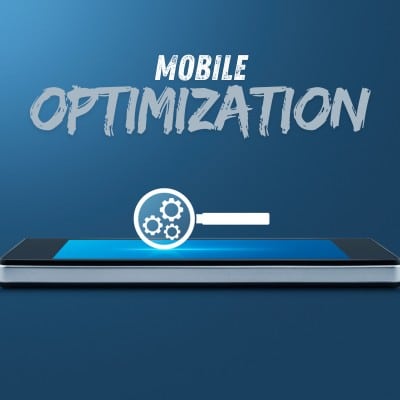
Mobile optimization is essential for increasing conversion rates, especially as the number of users accessing websites via mobile devices continues to grow. If your website isn’t optimized for mobile, you risk losing a significant portion of potential customers who might leave due to poor user experience. Here’s why mobile optimization is a must for improving conversions:
Growing Mobile Traffic: With mobile usage surpassing desktop in many industries, ensuring a seamless experience on mobile devices is critical. A website that loads quickly, displays properly, and is easy to navigate on mobile screens can significantly improve your website’s conversion rate.
Faster Load Speed: Mobile users expect fast load speeds, and if your website is slow, they are likely to abandon it. Optimizing for faster performance, including reducing file sizes, improving site speed, and ensuring responsiveness, can reduce bounce rates and lead to more conversions happening.
User-Friendly Navigation: Simplified, intuitive navigation on mobile devices is essential for keeping visitors engaged. When your website is easy to navigate on a mobile screen, visitors are more likely to continue through the conversion funnel and complete the desired action—whether it’s making a purchase or filling out a web form.
Mobile-Specific CTAs: Mobile optimization often involves adjusting your calls to action (CTAs) for mobile users. Ensure that buttons are easily tappable and prominent on small screens. This improves the likelihood of users engaging with CTAs and converting.
Responsive Design: A responsive design ensures your website adjusts smoothly to any screen size, providing a consistent user experience across devices. This can boost engagement, lower bounce rates, and ultimately lead to higher conversion rates.
Mobile-Friendly Content: Content should be concise and easy to consume on mobile devices. Break up long paragraphs, use bullet points, and make important information stand out to keep mobile users interested. When the content is easy to read, users are more likely to stay on the page and convert.
In conclusion, focusing on mobile optimization is crucial for maximizing conversions in today’s mobile-driven world. By enhancing site speed, improving navigation, and optimizing CTAs for mobile, you can create a smoother experience that leads to more mobile conversions and a better overall conversion rate for your website.
The Importance of Fast Load Speed for Conversion Optimization
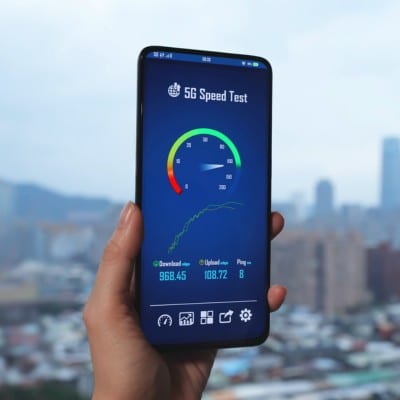
Fast load speed is a critical factor in effective conversion rate optimization (CRO). A slow-loading website can lead to frustrated visitors, higher bounce rates, and ultimately lost conversions. Ensuring that your website loads quickly is essential for delivering a smooth user experience and keeping potential customers engaged. Here’s why load speed is so important for boosting your conversion rates:
Improved User Experience: A fast-loading website keeps visitors engaged, making it easier for them to navigate and take the desired action. Whether they are browsing on mobile devices or desktops, a seamless experience reduces frustration, increasing the likelihood of conversions happening.
Higher Search Engine Rankings: Google prioritizes faster websites in its ranking algorithms. Faster sites often achieve better visibility in search engine results, driving more organic traffic to your site. Increased visibility means more visitors and, when optimized correctly, more conversions.
Lower Bounce Rates: Slow websites tend to have higher bounce rates, as users leave before the page fully loads. This means fewer opportunities for them to engage with your content or move through the conversion funnel. Fast load speed helps reduce these bounce rates, leading to more opportunities to convert visitors.
Better Mobile Optimization: Mobile users expect fast load times, and they are likely to abandon a slow site even more quickly than desktop users. Optimizing your site for mobile includes ensuring that load speed is fast on mobile devices, which is crucial for capturing mobile traffic and driving mobile conversions.
Positive Impact on CRO Tests: When conducting CRO tests, such as split testing, load speed plays an influential role in the results. Faster pages provide more accurate data, as users are less likely to abandon the test before interacting with the content. This allows for better optimization of key page elements and improved conversion rates.
In conclusion, improving site speed should be a top priority in any CRO strategy. A fast website creates a positive user experience, drives more organic traffic, and leads to higher engagement, ultimately resulting in increased conversion rates.
Using Split Testing to Improve Website Conversion Rates
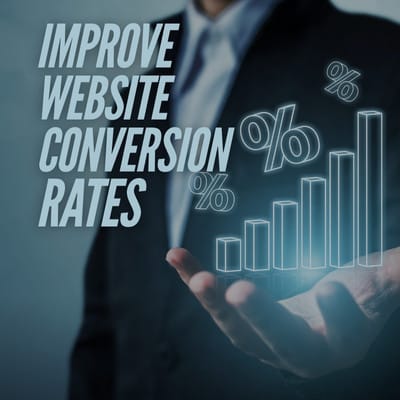
Split testing, also known as A/B testing, is a powerful method for improving your website’s conversion rate by comparing different versions of a webpage to determine which one performs better. It allows you to make data-driven decisions about the elements that impact user behavior and guide visitors toward taking the desired action. Here’s how split testing can help you optimize your site and drive higher conversion rates:
Test Key Page Elements: With split testing, you can test various page elements, such as headlines, CTAs, images, forms, or layouts, to see which version leads to more conversions. By identifying which changes resonate best with your target audience, you can make informed decisions about your website’s design and content.
Improve User Experience: Testing different versions of your web pages enables you to refine the user experience by focusing on what works best for your visitors. Whether you’re testing on mobile devices or desktop, optimizing the user journey can help reduce friction and increase conversion rates.
Optimize Landing Pages: Landing pages are critical touchpoints in the conversion funnel, and split testing allows you to tweak specific elements, such as the value proposition or call to action, to see which combination drives higher engagement and conversions.
Boost Mobile Conversion Rates: Running split tests on mobile-specific elements ensures that your website is optimized for mobile visitors, whose behavior may differ from desktop users. Testing mobile layouts, button sizes, or load speeds can help you improve mobile optimization and capture more mobile conversions.
Measure and Validate Changes: Split testing provides concrete data to back up your CRO efforts. By comparing versions, you can avoid relying on guesswork and instead use measurable results to determine which changes increase conversion rates. Continuous testing helps you refine your strategy and adapt to user preferences.
In conclusion, split testing is an essential tool for improving your website’s conversion rate by optimizing individual page elements based on real data. Regular testing helps ensure that you’re making the right changes to increase conversions and maximize the effectiveness of your CRO strategy.
Conclusion
In today’s digital landscape, effective conversion rate optimization (CRO) is essential for maximizing the potential of your website. By focusing on strategies like improving load speed, optimizing landing pages and product pages, leveraging split testing, and honing a clear value proposition, you can significantly increase your conversion rates.
CRO is a continuous process that combines user insights, data-driven testing, and strategic changes to deliver a seamless, engaging experience that encourages visitors to take action. Implementing these tactics will help you convert more visitors into loyal, paying customers, driving sustained growth for your business.

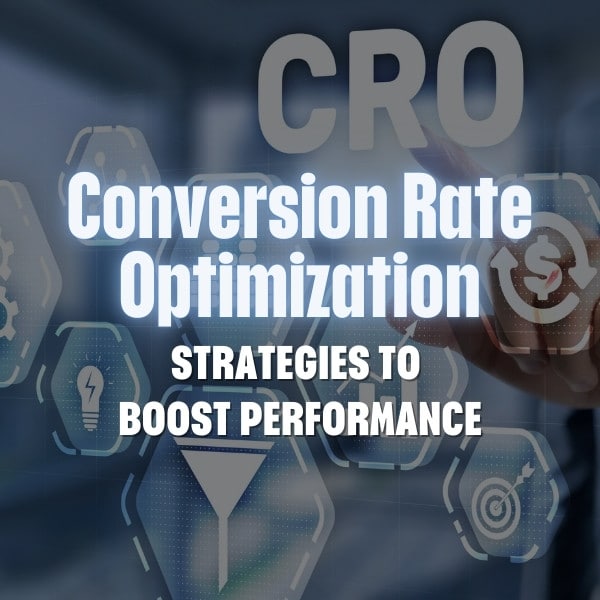

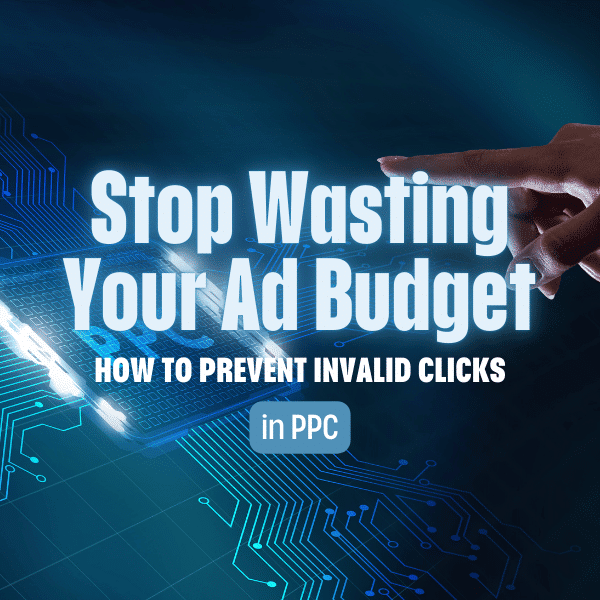
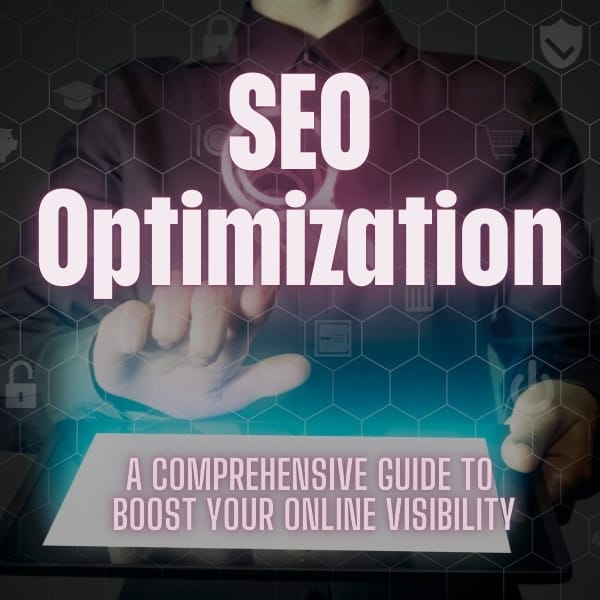
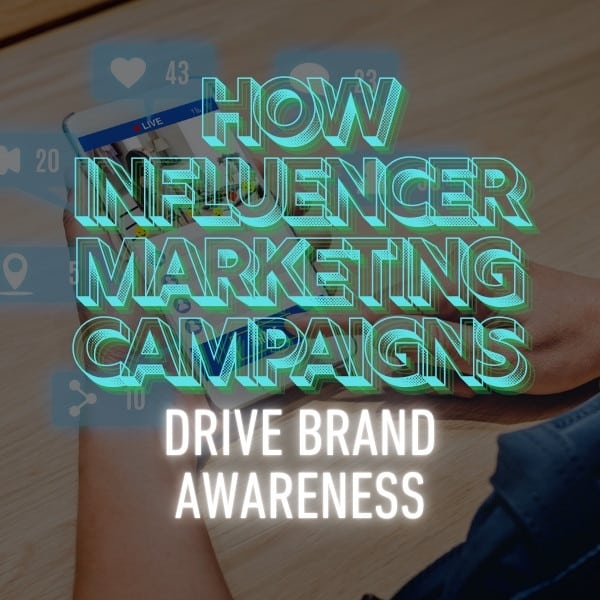
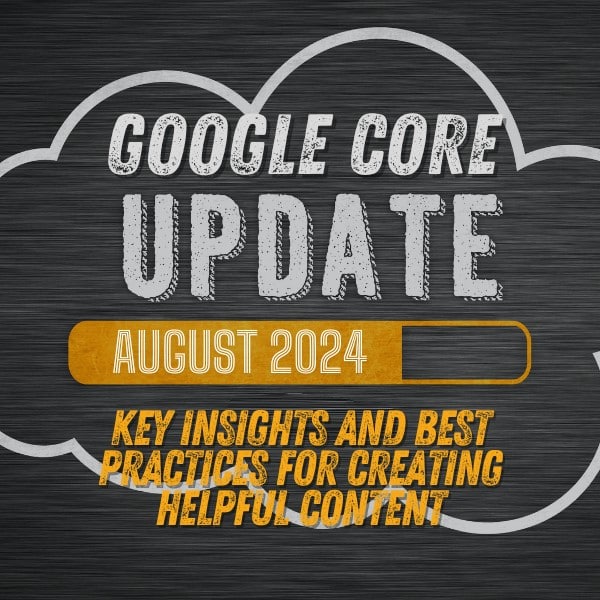





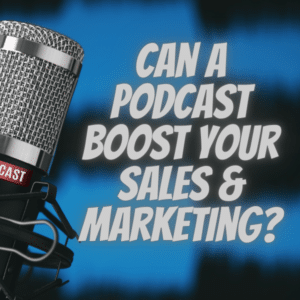


One Comment
Nice article…!